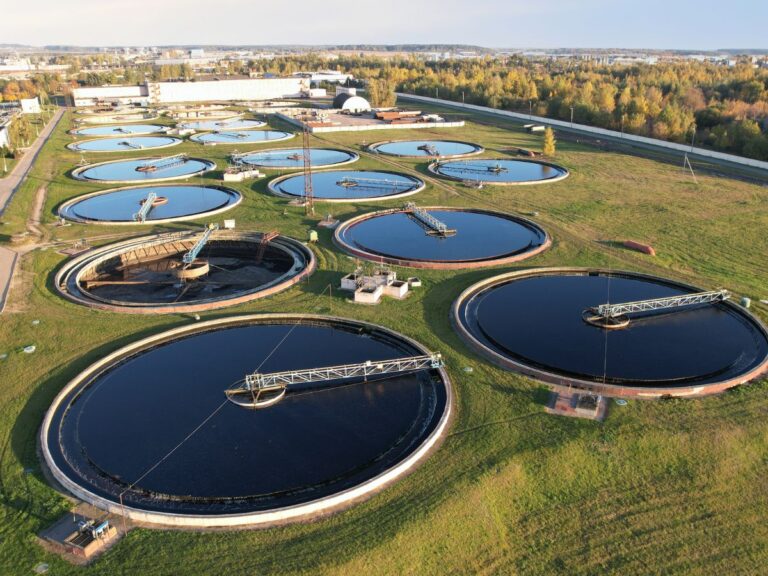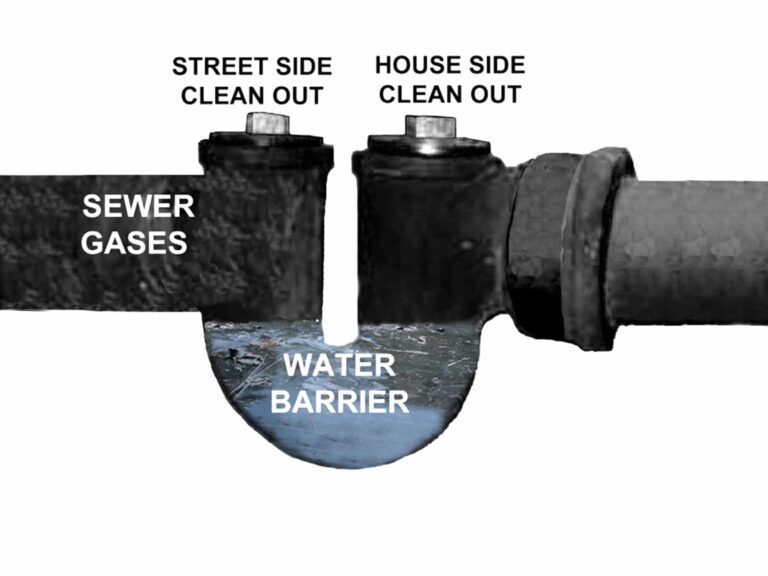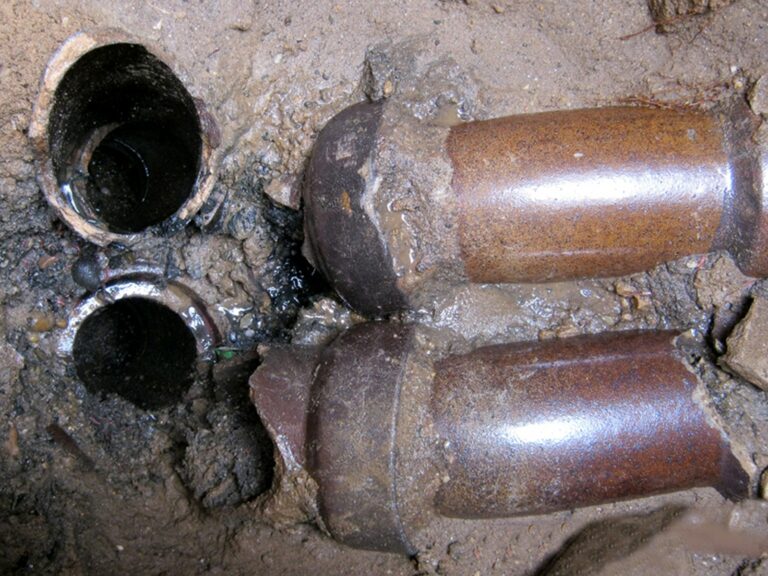A sewer backflow valve can prevent waste water backups, particularly from a public sewer. But before we get into the details and benefits of a sewer backwater valve, let’s explain what backwater is. Sewer backflow is a term used in plumbing for unexpected and unwanted flow of water in reverse direction. Normal plumbing allows wastewater to flow from a home to the city sewer, but backflow is the exact opposite.
When backflow happens, there can be a serious health risk due to contaminated waste water entering your premises. Backflow occurs when the municipal drainage system or city sewer overflows, and sends water back through a sewer pipe into your home. Immediate proper clean-up is required to prevent risk of disease and further damage to property. To prevent this problem, many homes would benefit greatly from a sewer backflow valve.

Causes of Sewer Backflow & Basement Flooding
Sanitary sewers work by the force and principle of gravity. So wastewater flows in the direction of the natural slope of the pipe. This is the main reason that the sewer mains owned and maintained by the city are typically located between 10′ and 15′ deep. In many areas, they are much deeper than that. Sewer backflow can be triggered by a number of different situations, some examples follow:
- Blockages (in either a private or city sewer pipe) caused by tree roots, construction mishaps, or plumbing system deterioration.
- Insufficient capacity due to residential growth
- Cracks in the pipe
- A back-pitched drain system
- Sewer surcharges due to heavy rain or a large snow melt
In an office and home plumbing system, blockages are often caused by accumulation of grease, hair, and any physical obstruction in the pipe. It may even include napkins, diapers, cigarette butts, toilet paper, and more.
When your sewer pipe is blocked, wastewater has no chance of flowing in the right direction, hence backflow. But the most serious and damage-causing sewer backflow conditions occur when a public sewer system becomes surcharged.
If the backflow comes from your city sewer, the most common culprit is a flood or any massive amount of water either from rain or a snow melt. Failure of a sump pump can also possibly lead to sewer backflow, but nowhere near as severe as that of a public sewer surcharge.
Because the backflow contains wastewater from many different unsanitary sources (after all, it is a public sewer), it not only damages properties but also creates severe health hazards. You have no control over the functionality of a city sewer system, but you can prevent backflow by adding a sewer backflow valve device to your plumbing system.
Different Types of Sewer Backflow Valve Devices
There are multiple types of sewer backflow valve devices, but all of them fall into three major categories. only one of which pertains to sewer wastewater) backwater. A brief description of the three main methods of backflow prevention follows. To learn more about sewer backwater valves, read the following two informative posts Install Sewer Check Valves in NYC and Automatic Backwater Valve, The Best Solution To Stop Sewer Backups
The 3 Types of Sewer Backflow Valve Devices
There are three main types of sewer backflow valves. The price range to purchase and install can vary greatly, depending on the valve. And the effectiveness of the valve can likewise vary greatly. Each sewer backflow valve has unique attributes, which must be considered carefully before installation.
- Sewer Check Valve:As sewer valves go, a check valve is the least expensive, and the type most often installed. A check valve does not prevent backwater 100%, so it is ideal for short-term backups lasting less than a full day. Like all sewer valves, once the flapper closes, water use inside the building must be limited.
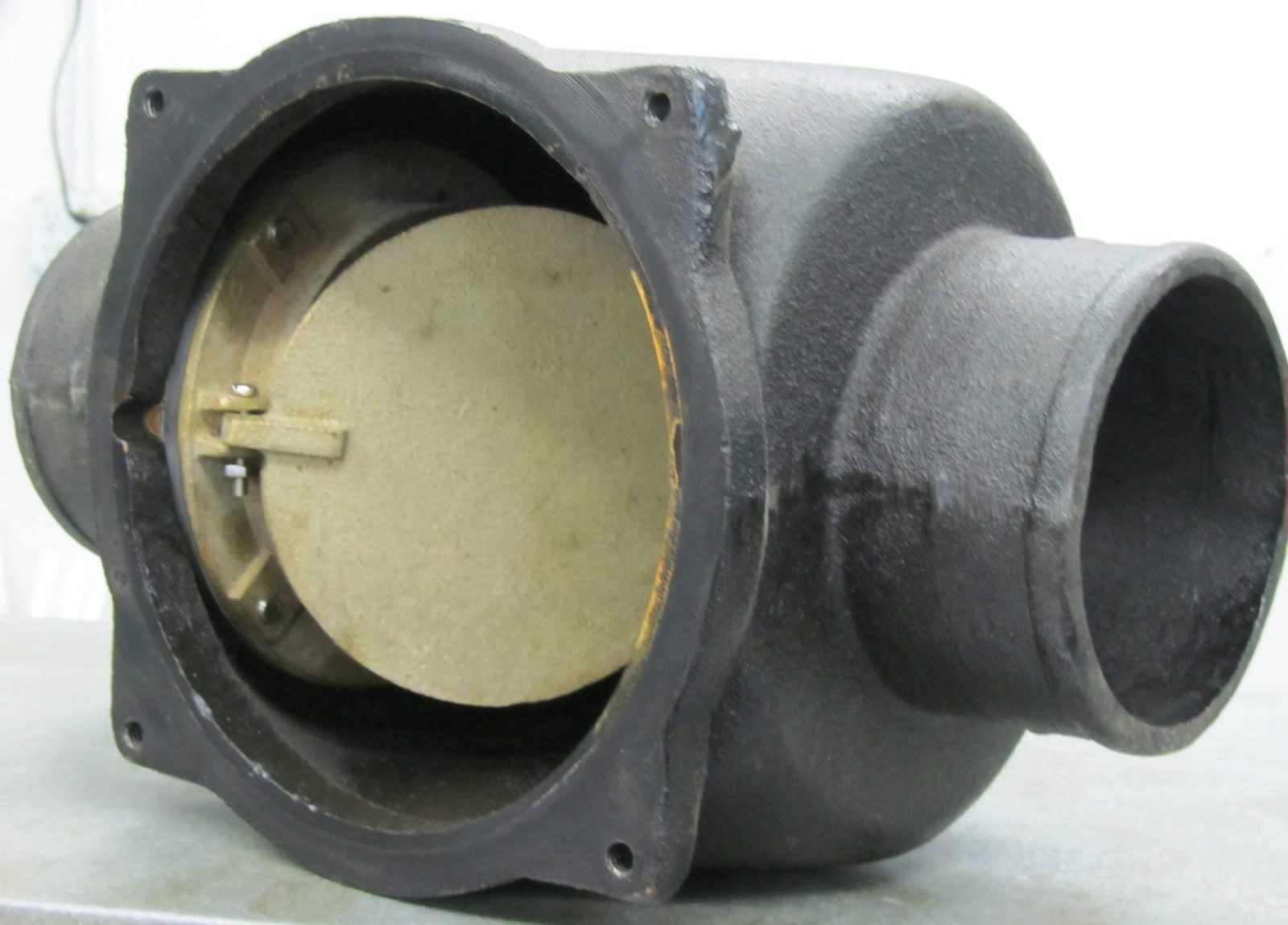
When a public sewer backup recedes, the check valve will automatically allow the wastewater from your home to escape and run out to the public sewer. A check valve should be cleaned once a year to ensure the flap opens and closes fully.
2. Automatic Flood Gate Valve:An automatic flood gate valve is the most sophisticated and 100% effective way to stop wastewater and the damage associated with it. An automatic flood gate valve works on air pressure, and (as its name implies) is fully automatic.
Once closed, its stainless steel knife edge stops backwater 100% over prolonged periods. Like all specialized plumbing devices, this device should be installed by none but Licensed Plumbers, with the manufacturer’s instructions followed closely.
If installed incorrectly not only will it not work properly, but the product warranty will be void. Because an automatic flood gate valve is larger than the typical sewer backwater valve (mainly due to the air chamber), the installation must be considered and planned out carefully.
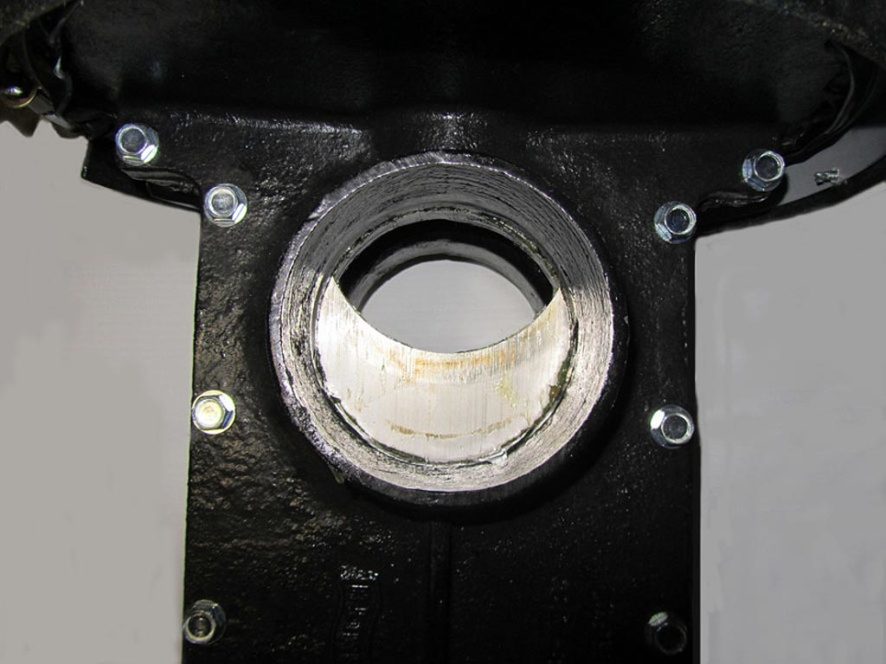
3. Manual Sewer Gate Valve:A manual sewer valve, as its name implies, must be opened and closed manually. That means one must anticipate when a backwater condition will arise. And likewise, one must know when the backwater has receded. While a dependable device, the chance of misuse and backwater damage occurring regardless makes it a device suitable for only very particular situations.
An Air Gap Backflow Preventer
It is the simplest yet reliable way to prevent backflow. As the name suggests, an air gap is an unobstructed vertical space between any device that connects to a plumbing system (such as a faucet or valve). The best example of an air gap is the open space between a water outlet (a faucet) and the flood rim level of a kitchen sink.
In normal circumstances, water cannot flow from the sink to the tap, even when there is no water pressure present in the water supply. There are no moving parts in an air gap, except flowing water. Many plumbing codes specify minimum air gap distance for different plumbing fixtures.
Specialized Backflow Preventer for Drinking Water Supply
Commonly installed within close proximity to a residential water meter, a backflow preventer device can be installed right after the shut-off valve. Many models are available including but not limited to RP (Reduced Principle), PVB (Pressure Vacuum Breaker Assembly), DV (Double Check Valve Assembly), and RDC (Residential Dual Check Valve). These valves are installed when there is no sufficient vertical space to add air-gap separation.
Use A Licensed Plumber to Install Backflow Prevention Devices
Specialized backflow preventers can have many moving parts, and need to be both tested for efficiency and periodically cleaned. Almost all States allow only a licensed professional plumber to compile the report and test backflow preventers on the drinking water supply.
Although a skilled individual may be able to install such a device, there is always a chance that the installation does not meet standard plumbing codes. In which case you have wasted your money and efforts to acquire and install the device, and have possibly endangered the health of your family and yourself.
Some backflow device models also require specialized tools, which should be used by a licensed plumber as well. Depending on where you live, you probably require a permit to install a backflow preventer.
Although you may be able to install a backflow prevention device using standard hand tools, the assembly can be faulty due to several factors, the correct location being one of them.
Some models of sewer backflow valves require special tools that are not commercially available but can be fabricated or purchased from the manufacturer of your backflow valve device manufacturer. A certified plumber will be able to determine if you need them.
Some of the most common tools required for an installation
• Pipe extractors
• Pipe cutters
• Line pressure gauge setup
• Adapter sets made of brass and plastic
• Seat removal tool
• Test cock cleaning tool
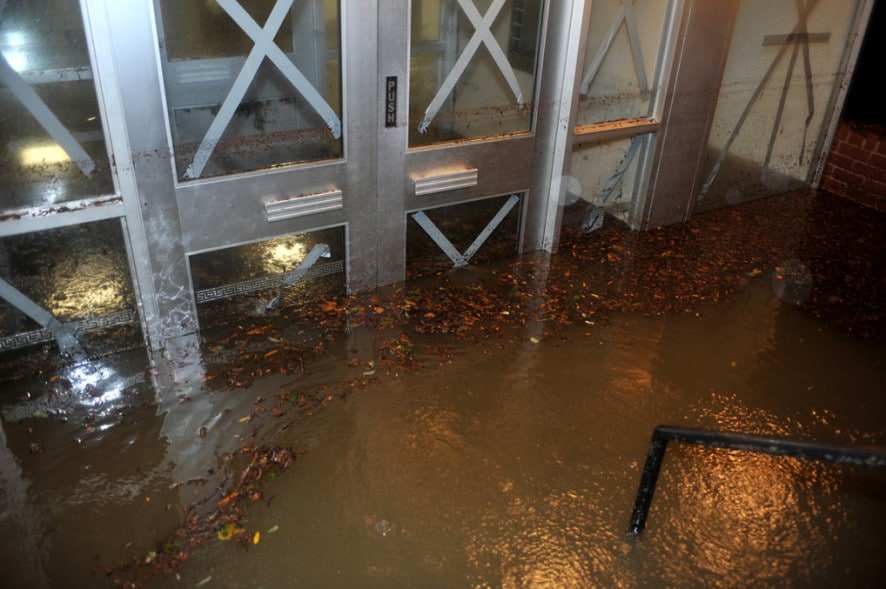
The dangers of an improper sewer backflow preventer installation
In the case of installing a sewer backflow valve, the dangers to one’s health are not as severe as those involving drinking water. However, most people fail to realize the implications of an improper installation. Not only will sewer backwater remain a problem, but an incorrectly installed sewer valve can exasperate the problem.
As an example, a sewer backwater valve must be the first fitting on the house side of the inside of the foundation wall. If there is any sort of outlet before a sewer backwater valve, the backwater can rush out of it with incredible force. The wastewater damage can exceed that of before the sewer valve was improperly installed.
Another factor people fail to frequently realize is the health implications of sewer backwater. Quite unlike fresh potable water, wastewater carries a multitude of health risks. As its name suggests, a public sewer carries virtually all waste discharge. That means that not only is raw human waste in the mix, but unknown commercial and other unknown items as well.
Once this filthy mix enters your home, none but a licensed and trained professional cleaning service should be used. In many cases, the cost of a proper clean-up exceeds that of a proper sewer valve installation.
How, Where, and When, To Install a Sewer Backflow Valve
A sewer backflow valve can be installed in the main sewer pipe outside of your home or in the basement at the farthest exit point from the home. The device is installed downstream to prevent sewage from flowing into your sewer pipe above the device.
Installation depends on the manufacturer’s assembly instruction, but usually, there are only three different versions: Threaded and Glued method which involves a threaded T device into the pipe, Compression Fitting method which relies on a pressure washer to seal around the pipe, and Bell (hub) and plain end of the pipe.
In any of the three cases, an improper installation will lead to wastewater leakage, a failure of the device, or both. In addition, many buildings, due to their design, are not a candidate for a sewer valve. Always consult a licensed professional before installing any type of backflow preventer.
The three most common installation errors:
- When a house sewer also accepts rainwater flow from the roof or area drains, a sewer backwater valve cannot typically be installed.
- Installing a sewer backwater valve on the house side of the trap is an improper installation. If the trap plugs leak, or blow off, you will be flooded with wastewater.
- If the adequate pitch of the pipe is not available, the valve will neither open nor close properly. In addition, the house drain may suffer from frequent clogs.
How Backflow Preventer Devices Are Maintained
Regardless of the installation method and type, a specialized sewer backflow prevention device has internal seals, springs, moving parts, and it is subject to direct contact with wastewater. That means they are subject to wear and tear over time. All sewer backflow valve devices require periodic maintenance, and more importantly, should be tested by a knowledgeable person. As a side note, only certified testers are allowed to do the test on backwater devices involving drinking water and compile reports based on their finding.
But even a sewer backflow preventer or valve test should be performed annually by a knowledgeable individual, preferably the licensed firm that installed it. Even a partially blocked device will not function properly. If the gate of a valve has not moved for a long period of time it can become stuck in the open position just when you need it the most.
The Benefits of a Sewer Backflow Preventer Device
A sewer backflow valve is designed to do one function only: It prevents backflow from a municipal drainage system or city sewer into your home. Installation and maintenance can be simple, but sometimes are quite cumbersome. But this is a crucial part of a home remaining sanitary, and making sure that your plumbing system does not contain contaminated water. The benefit does not end at avoiding expensive repairs due to damages, but it also helps to prevent health hazards in the water you drink and the environment you live in.



